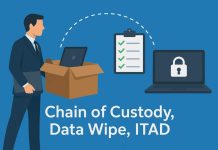In today’s digital age, where online security is essential, discerning between legitimate communications and attempts to phish is essential, particularly when evaluating Microsoft 365 email security services like cloud email security services.
The most common phishing technique is fake emails that pretend to be from prominent companies such as Microsoft. They usually try to trick users into divulging personal information or downloading malicious attachments. It is, therefore, crucial to determine if an email sent by it is genuine. In this post, we’ll examine various methods to assist you in determining the authenticity of emails from Microsoft and help you avoid falling victim to phishing scams.
Key Takeaways
- Recognize phishing emails by identifying red flags like poor grammar or requests for personal information; Microsoft communication typically avoids urgency and personal data requests.
- Verify the sender’s email address for authenticity, as phishing attempts often use slight variations in email domains.
- Use email headers to track the source of the email; always check the details before acting on suspicious messages.
- Hover over hyperlinks to preview URLs, and avoid clicking on links directly; manually type trustworthy URLs into your browser instead.
- Report any suspicious emails to help combat phishing; Microsoft provides tools and addresses for reporting phishing attempts.
What Are Red Flags for Suspicious Emails?
Microsoft 365 email security services can filter and help you identify suspicious emails. These red flags usually contain spelling and grammar errors and general greetings. Genuine messages from it are typically carefully designed using professional grammar and language. For example, an email with the subject line “Your Account was suspended” could be suspected due to spelling errors and an inconsistent email address.
A common phishing tactic is to create a false impression of urgency and force the victim to take action quickly. Beware of emails stating that immediate action is needed to avoid negative consequences, such as account suspension or data breaches. Microsoft emails are legitimate and give users plenty of time to address problems. They do not create fear or urgency.
Additionally, authentic Microsoft emails rarely request personal information directly in the email in the email itself. Any email that asks for sensitive information, such as passwords, social security numbers, or credit card numbers, should be treated cautiously. Microsoft will never request that you supply sensitive information through email.
Verified Sender Information
Checking the sender’s email address is a reliable way to verify the authenticity of an email. Email addresses that mimic authentic Microsoft accounts usually have minor deviations or anomalies. For example, an email claiming to be from Microsoft might have an address such as microsoft-support@hotmail.cominstead of the expected @microsoft.com domain. Always confirm the sender’s email address for deviations from legitimate addresses.
Examining email headers could be helpful because they contain details about the source of the email. For example, examining the headers can help determine whether Microsoft sent the email. However, how to access email headers may differ depending on the email program or service you use, so check the email provider’s instructions for more information.
Review Links and Attachments
Cloud-based email security tools can safeguard users from the danger of phishing emails containing hyperlinks to harmful websites that can steal users’ personal information. To determine the legitimacy of a hyperlink, simply hover your cursor over it without clicking. A preview or tooltip will pop up with the URL to which the link leads. The URL may be an attempt to evade detection when it is not Microsoft’s standard URL. For example, a link in a fraudulent email may appear as “http://microsoft.secure-account-login.com” instead of the authentic “https://login.microsoft.com.”
It is best to manually type the URL into your browser’s address field instead of clicking on the link, which could be risky. This guarantees you’re on the legitimate Microsoft website, not an imitation. Additionally, if an email contains unsolicited attachments, take care before opening or downloading them. The attachments could be infected with malware that can compromise your computer’s security. Always verify the authenticity of emails and attachments before taking action.
Microsoft Official Channels
Microsoft utilizes official channels to communicate with users. These channels are trusted and can be relied upon to ensure authentic communication. Microsoft 365 Email Security Services are often integrated into these channels to improve user security. The channels are the Microsoft Account portal and the Microsoft 365 admin portal. Instead of directly clicking on links included in an email, it is recommended to go to these portals by entering the URLs directly into your browser. If you sign in to your Microsoft account through the official portal, you are safe from phishing scams.
Microsoft offers the Security & Compliance Center additional information on recognizing fraudulent attempts to phish. This resource provides comprehensive information about detecting and reporting suspicious emails, safeguarding personal information, and keeping it safe online. Utilizing Microsoft’s official channels and resources can help you avoid fraudsters who use phishing and keep you updated on the latest security precautions.
Reporting Suspicious Emails
Reporting phishing emails for your safety is crucial and helps stop fraud online. If you receive a suspicious email claiming to be from Microsoft, you must immediately report it. Cloud-based email security services can assist in identifying and reporting the dangers. Microsoft, for example, offers specialized reporting tools and email addresses specifically made to report phishing threats.
One way to report suspicious emails is to use various email services’ “Report Message” feature. This option allows you to mark an email as spam, phishing, or suspicious. Additionally, Microsoft offers specific email addresses where you can forward suspicious messages, such as the Anti-Phishing Team at phish@office365.microsoft.com or reportphishing@apwg.org. Reporting these issues helps Microsoft combat phishing and protect other users from scams similar to this.
Continue to Discover The Ways to Stay Clear of Fraudulent Emails
It is important to recognize authentic Microsoft communication when faced with the threat of phishing scams. You can determine the authenticity of an email by identifying red flags, such as poor grammar and immediate requests for personal data. Verify the sender’s information, examine attachments and links, and use Microsoft’s official channels to communicate securely. Report any suspicious emails immediately to help fight fraud. By remaining vigilant and practicing these strategies, you can safeguard your online security and protect yourself from scams involving phishing.











